Cable knowledge that cable distributors need to know
Cable knowledge that cable distributors need to know
1、Codes of some commonly used national standards, industry standards and professional standards in my country
Code | Meaning |
GB GB/T GBn GJB GBJ | National recommended standards National recommended standards National internal standards National Military Standard National Engineering Construction Standard |
/T DL JB SJ YD CSBTS/TC | Industry Mandatory Standards Industry recommended standards Electric Power Industry Standard Machinery industry standards (including machinery, electrical engineering, instrumentation, etc.) Electronics Industry Standard Ministry of Posts and Telecommunications Standards National Wire and Cable Standard Technical Committee Standard |
2、Commonly used international standards and foreign standard codes
Code | Meaning | Code | Meaning |
ISO | International standard | IS | Indian Standard |
ISO/DIS | Draft International Standard | ISIRI | Iranian Institute of Standards and Industry Standards |
ANSI | American National Standard | JIS | Japanese Industrial Standard |
AISI | American Iron and Steel Institute Standards | KS | Korean Industrial Standard |
ASME | American Society of Mechanical Engineers Standards | MS | Malaysian Standard |
ASTM | American Society for Testing and Materials Standards | NB | Brazilian Standard |
BHMA | American Construction Hardware Manufacturers Association Standard | NBN | Belgian Standard |
FS | U.S. Federal Specifications and Standards | NCh | Chilean Standard |
MIL | U.S. military standards and specifications | NEN | Dutch Standard |
SAE | American Society of Mobile Engineers Standards | NF | French Standard |
UL | American Underwriters Institute Standards | ISO/R | International Standards Organization recommended standards |
AS | Australian Standard | IEC | International Electrotechnical Commission |
BS | British Standard | NI | Indonesian Standard |
CSA | Canadian Standard | NOM | Mexican official standards |
DIN | German standard | NP | Portuguese Standard |
DS | Danish Standard | NS | Norwegian Standard |
ELOT | Greek standard | NSO | Nigeria Standard |
ES | Egyptian Standard | NZS | New Zealand Standard |
IRAM | Argentina Standard | ONORM | Austrian Standard |
I.S. | Irish Standard | PN | Polish standards |
SABS | South African Standard Specification | PS | Pakistan Standard |
SFS | Finnish Standards Association Standard | PS | Philippine Standard |
SI | Israeli standards | PTS | Philippine Trade Standard |
SIS | Swedish standard | STAS | Romanian Standard |
SLS | Sri Lanka Standard | TCYN | Vietnam Standard |
SNS | Syrian Standard | TIS | Thai Standard |
SN | Swiss Standard | TS | Turkish Standard |
SOI | Iranian Standard | UNE | Spanish Standard |
S.S. | Singapore Standard | UNI | Italian Standard |
ROCT | CIS National Standard | ROCTP | CIS National Standard |
3、Letter symbols and their meaning
letter | Express meaning |
A | (Poly) urethane (ester), installation (installation), aluminum plastic sheath |
B | Flat, semi-woven (woven), pump, cloth, (poly)styrene (ethylene), glass (glass fiber), patch, flat (parallel) (ie flat) |
C | Car, alcohol, mining (excavator), porcelain, heavy (type), marine, (storage) pool, magnetic, charging, compensation (yellow wax) silk, vinegar (acid film), self-supporting |
D | With, (not) trickle, lamp, electricity, (cold) freezing, D (base rubber), plating, anti-aging agent |
E | Two (floor), field (outdoor), symmetry (structure code) |
F | (Polytetrafluoroethylene (ethylene), phase separation, non-flammable, fly (machine), foamed polyethylene (YF) |
G | Steel, trench, silicon, modified (sex paint), tube, high (pressure) |
H | Alloy (gold), ring (oxygen paint), welding, flower, communication cable (use code), H (type), split-phase shielding structure code |
J | Twisting, strengthening (strengthening), thickening (thickening), sawing, rounding (use), cross-linking |
K | (True) void, card (pulon), control, armor, hollow |
L | Aluminum, furnace, wax (gram), bitumen (green), anti-thunder (lightning), phosphorus |
M | Cotton (yarn), hemp, mother (thread), cap, membrane |
N | Viscosity (sexual), mud (carbon), resistance (ni), nylon (long) |
O | Coaxial (structure code) |
P | Row, screen (shield), distribution (line), signal cable (use code) |
Q | Traction (lead), paint, lead, light (type), gas, steam (vehicle), (high) strength (polyvinyl acetal) |
R | Soft, human (made), daily use, heat (chemical) |
S | Brush, wire, shot (frequency), double, plastic (steel sheath) |
T | Copper, antimony, special, pass, elevator, probe |
U | Mine (asbestos), mining |
V | V (polyvinyl chloride) |
W | Physical (physical), wrinkle sheath, non-magnetic (magnetic), temperature |
X | Rubber (power cable), polyamide, rubber (insulation) |
Y | Hard, round, oil, oxygen, resistant (oil), mobile, polyethylene, (electric) pressure |
Z | (Polyester), paper, electric drill, medium-sized, comprehensive (combined) |
Model | Name | Suitable |
02 | PVC sheath | Aluminum sleeve, lead sleeve, corrugated aluminum sleeve, corrugated steel sleeve protection |
03 | Polyethylene sheath | Aluminum sleeve, lead sleeve, corrugated aluminum sleeve, corrugated steel sleeve protection |
20 | Bare steel tape armor | Lead sleeve withstands pressure protection |
21 | Steel tape armored fiber jacket | Lead sleeve bears pressure to prevent corrosion |
22 | Steel tape armored PVC sheath | Aluminum sleeves, lead sleeves, corrugated aluminum sleeves, non-metallic sleeves are resistant to corrosion |
23 | Steel tape armored polyethylene sheath | Aluminum sleeves, lead sleeves, corrugated aluminum sleeves, non-metallic sleeves are resistant to corrosion |
30 | Bare thin steel wire armor | Metal sleeves and non-metal sleeves withstand tension |
31 | Thin round steel wire armored fiber outer quilt | Lead sleeve anti-corrosion bears tensile force |
32 | Thin round steel wire armored PVC sheath | Metal sleeve and non-metal sleeve are protected against tension |
33 | Thin round steel wire armored polyethylene sheath | Metal sleeve and non-metal sleeve are protected against tension |
40 | Bare thick round steel wire armor | Metal sleeve and non-metal sleeve are protected against tension |
41 | Thick round steel wire armored fiber outer quilt | Metal sleeve and non-metal sleeve are protected against tension |
42 | Thick round steel wire armored PVC sheath | Metal sleeve and non-metal sleeve are protected against tension |
43 | Thick round steel wire armored polyethylene sheath | Metal sleeve and non-metal sleeve are protected against tension |
102 | Copper tape radially reinforced PVC sheath | Metal sleeves and non-metal sleeves require non-magnetic pressure protection |
103 | Copper tape radially reinforced polyethylene sheath | Metal sleeves and non-metal sleeves require non-magnetic pressure protection |
202 | Stainless steel belt radially reinforced PVC sheath | Metal sleeves and non-metal sleeves require non-magnetic pressure protection and anti-corrosion |
203 | Stainless steel belt radially reinforced polyethylene sheath | Metal sleeves and non-metal sleeves require non-magnetic pressure protection and anti-corrosion |
141 | Copper tape radially reinforced thick steel wire armor fiber outer layer | Metal sleeves and non-metal sleeves require non-magnetic pressure protection and anti-corrosion |
241 | Stainless steel belt radially reinforced thick steel wire armored fiber outer layer | Metal sleeves and non-metal sleeves require non-magnetic pressure protection and anti-corrosion |
441 | Double thick round steel wire armor fiber outer quilt | Metal sleeves and non-metal sleeves require non-magnetic pressure protection and anti-corrosion |
2441 | Steel belt radially reinforced double thick round steel wire armored fiber outer quilt | Metal sleeves and non-metal sleeves require non-magnetic pressure protection and anti-corrosion |
5、Common cable structure calculation
1) Round single wire: The round single wire is a single round wire that is not covered with other metal layers.
2) The area S of the circular single line
π
S = —— d2(mm2)
4
3)Circular single line circumference L
L = πd (mm)
4)Weight of round single wire
π
W = —— d2 ρ= Sρ(kg/km)
4
Where:ρ——Material density(g/cm3)
5)Common round single wire weight
Materials used | Material density(g/cm3) | Weight(kg/km) |
Aluminum and aluminum alloy | 2.7 | 2.121d2 |
Copper | 8.89 | 6.928 d2 |
Steel (iron) | 7.8 | 6.126 d2 |
6)Flat wire: Flat wire is used for rectangular conductive core of electromagnetic wire and cable armor.
S = ab — [4r2—πr2]
= ab — 0.858 r2 (mm2)
Where:a——thickness(mm);
b——width(mm);
r——Fillet radius(mm)。
7)Circumference of the flat wireL
L = 2(a + b)— (8r — 2πr)
8)Flat wire size deviation
Dimension deviation of the narrow side a of the flat line
Nominal size a(mm) | Deviation(mm) |
a≤3.15 3.15< a≤6.30 6.30< a≤7.10 | ±0.03 ±0.05 ±0.07 |
Dimension deviation of the narrow side b of the flat line
Nominal size b(mm) | Deviation(mm) |
b≤3.15 3.15<b≤6.30 6.30< b≤12.50 12.50< b≤16.00 | ±0.03 ±0.05 ±0.07 ±0.09 |
Dimension deviation range of flat wire fillet radius
Nominal size a(mm) | Fillet radiusr(mm) | |
Nominal | Deviation(%) | |
a≤1.00 1.00<a≤1.60 1.60<a≤2.44 2.44< a≤3.55 3.55< a≤6.00 6.00< a≤7.10 | a/2 0.5 0.65 0.80 1.00 1.20 | ±25 |
9)The outer diameter Do of the center layer composed of 1~5 single wires
Number of single wires Zo | Outer diameter Do(mm) | Outer diameter ratio Mo(Do/d) |
1 | Do = d | 1 |
2 | Do = 2d | 2 |
3 | Do = 2.154d | 2.154 |
4 | Do = 2.414d | 2.414 |
5 | Do = 2.7d | 2.7 |
10)Common stranded wire cross-sectional area S and weight W
S = (π/4)d2Z(mm2)
Where:d——Single wire diameter;
Z——The total number of single wires.
W = SKmρ= (π/4)d2ZKmρ(kg/km)
Where:Km——Average twisting factor of twisted wires;
ρ——Density of materials used for stranding(g/cm3)。
11)Multi-stranded wire: The multi-stranded wire is made of multi-stranded wire or ordinary twisted wire with regular twisting, so the outer diameter is round.
12)Outer diameter of twisted stranded wire D complex 1
When the glue wire of the double-stranded wire is twisted:
D =(D/ D)(D/d)d
=(D/d)d = M·d
When stranded wire is used as the glue line of the multiple stranded wire:
D =(D/ D)(D/d)d
=(D/d)d = M·d
When the glue wire of the double-stranded wire adopts the bundle wire:
D =(D/ D)(D/d)d·k
=(D/d)d ·k = M·d·k
Where:D/ D——The ratio of the outer diameter of the stranded wire to the outer diameter of the strand;
D/d——The ratio of the outer diameter of the strand to the diameter of the single wire;
d——Single wire diameter;
——D/d;
K——Harness adjustment factor.
13)Multi-stranded wire filling system η complex
η =η1η2×100(%)
Where:η1η2——Respectively the filling factor of strands twisted and twisted(%)。
14)Weight of multiple stranded wire W multiple
W =W Z K (kg/km)
Where:W ——The number of strands in the twist;
K ——The twist-in coefficient of the twist.
15)Hollow core: generally used for conductive cores of high-voltage cables with insulators (such as insulating oil for oil-filled cables).
16)Single round wire constitutes the outer diameter and weight of the hollow core
The outer diameter D is calculated by the following formula:
D = D + 2nd +2t (mm)
Where:D——Outer diameter of inner support spiral tube(mm)
n——Number of twisted layers of copper single wire
d——Copper single wire diameter(mm)
t——Shield thickness(mm)
The weight W is calculated as follows:
W = W piece + W copper + W screen (kg/km)
W copper =(π/4)d2ZKmρ (kg/km)
Where:W piece-weight of inner support spiral tube;
W copper —— weight of copper wire;
W screen ——The weight of the shielding layer.
17)Outer diameter and weight of Z or bow-shaped single-wire hollow core
The outer diameter D is calculated as follows:
D = Do + 2t = Do + 2(t1 + t2) (mm)
Where:Do —— Aperture of stranded wire(mm);
t —— The total thickness of the stranded wire;
t1 —— Z-shaped wire thickness(mm);
t2 —— Bow line thickness(mm);
18)Compressed stranded wire and compacted core: The compressed stranded wire for overhead lines and the circular compacted core for the conductive core of the cable have the same structure, stranding and compacting process and cross-sectional shape. Their outer diameters are smaller than ordinary stranded wires.
19)The cross-sectional area of compressed stranded wire and compressed core S
π 1
S = — d2 Z — (mm2)
4 μ
Where:d——Single wire diameter
z——Number of single wires;
μ——Take the following empirical values for the single-line elongation coefficient during compression:
The section is 25~70mm2,μ=1.05;95~120mm2,μ=1.035;section≥150mm2,μ=1.04。
20)Weight of compressed stranded wire and tightly pressed core W
π 1
S = — d2 Z — Kmρ (kg/km)
4 μ
Where:Km——Average twisting factor;
ρ——Material density(g/cm3)
If the stranded wire is composed of single wires of different diameters, the product of d2 Z should be calculated separately.
21)Physical insulation layer: This is a common insulation layer, which includes extruded or longitudinally wrapped rubber insulation, extruded or coated plastic insulation and paint film.
22)Round single core insulation layer: This is the simplest form of insulation layer. This form is mainly used for general insulated wires, enameled round wires, communication wires and cables, signal and control cables, etc.
Insulation outer diameter D
D = d + 2t (mm)
Where:d —— Conductor diameter(mm);
t —— Insulation thickness(mm);
Insulating layer cross-sectional area S
S = π(d + t)t (mm2)
Insulation weight W
W =π(d + t)tρ (kg/km)
Where:W —— Weight of solid paint film(kg/km);
ω —— Solid content(%)
Polyethylene 0.92-0.95 Polyvinyl chloride 1.35-1.4
23)Outer diameter and material weight of steel tape armored
D = D1 + 4t — 1 (mm)
W =π(D1 + 2t — 1)2tρk (kg/km)
Where:D1 ——Outer diameter of steel tape armored front half product(mm)
t——Strip thickness(mm)
ρ——Steel strip density(g/cm3)
k——Gap coefficient of steel belt.
6、Varieties, characteristics and uses of enameled wire
Category | Product name | Advantages | limitation | The main purpose |
Polyester enameled wire | Class 130 thin paint film polyester enameled copper wire Class 130 thick paint film polyester enamelled round copper wire | 1. It has excellent voltage breakdown resistance under dry, humid and soft conditions; 2. QZN type enameled wire can be bonded and formed by itself. | 1. Poor water resistance (note when used for sealing motors or electrical appliances); 2. Incompatible with high molecular compounds such as polyethylene and neoprene; 3. General thermal shock performance. | Windings of general-purpose small and medium-sized motors, dry-type transformers and coils of electrical instruments. |
Class 155 thin paint film polyester enameled copper wire Class 155 thick paint film polyester enameled round copper wire | ||||
Thermal bonding or solvent bonding film polyester enamelled round copper wire | ||||
Acetal enameled wire | Class 120 thin film acetal enameled round copper wire Class 120 thick film acetal enamelled round copper wire 120 grade extra thick film acetal enameled round copper wire | With thermal shock, scratch resistance and water resistance, etc. | The paint film is easy to break lines after being wound (before dipping, it must be heated at 120°C for more than 1 hour to eliminate stress) | General purpose small and medium motors, micro motor windings and oil-immersed transformer coils, coils for electrical appliances |
Polyurethane enameled wire | Class 130 thin paint film polyurethane enamelled round copper wire 130 grade thick paint film polyurethane enamelled round copper wire Thermal bonding or solvent bonding thick paint film polyurethane enamelled round copper wire | 1. Low dielectric loss under high-frequency conditions; 2. It can be welded directly without scraping off the paint film; 3. It has good colorability and can be made into enameled wires of different colors for easy identification | 1. Poor overload performance; 2. General thermal shock and scratch resistance. | High-frequency coils, TV coils and cable coils that require stable Q values, and fine coils for instruments |
Polyesterimide enameled wire | Class 180 thin film polyesterimide enamelled round copper wire 180 grade thick paint film polyester imide enameled round copper wire Class 180 thin paint film polyester imide enamelled rectangular copper wire Class 180 thick varnished polyester imide enamelled rectangular copper wire | 1. It has excellent voltage breakdown resistance under dry, humid and soft conditions; 2. Good thermal shock performance. | 1. It is easily hydrolyzed in a water-containing sealing system; 2. It is incompatible with polyvinyl chloride and neoprene with chlorine-containing polymer materials. | Windings of motors in high-temperature motors and refrigeration devices, coils of dry-type transformers and electrical instruments |
Polyimide enameled wire | Class 220 thin paint film polyimide enameled round copper wire Class 220 thick paint film polyimide enameled round copper wire Class 220 thin paint film polyimide enamelled rectangular copper wire Class 220 thick varnished polyimide enamelled rectangular copper wire | 1. Excellent heat resistance; 2. Excellent softening breakdown and thermal shock; 3. Excellent resistance to low temperature radiation; 4. Excellent resistance to solvents and chemicals. | 1. General scratch resistance; 2. Poor alkali resistance; 3. Easily hydrolyzed in a water-containing sealing system; 4. The paint film is prone to cracks when subjected to winding. | High temperature resistant motor windings, dry-type transformers, sealed relays and electronic components. |
Composite enameled wire | Class 180 thin paint film polyesterimide/polyimide composite enameled round copper wire 180 grade thick paint film polyesterimide/polyimide composite enameled round copper wire 180 grade extra-thick paint film polyesterimide/polyimide composite enameled round copper wire Class 200 thin paint film polyesterimide/polyimide composite enameled round copper wire 200 grade thick paint film polyesterimide/polyimide composite enameled round copper wire Class 200 thin paint film polyesterimide/polyimide composite enameled rectangular copper wire 200 grade thick paint film polyesterimide/polyimide composite enameled rectangular copper wire | 1. Excellent heat resistance; 2. Excellent softening breakdown and thermal shock; 3. Excellent low temperature radiation resistance. | 1. It is easily hydrolyzed in a water-containing sealing system; 2. It is incompatible with polyvinyl chloride and neoprene with chlorine-containing polymer materials. | Windings of refrigeration equipment motors and high-temperature motors, dry-type transformers and coils of electrical instruments |
Other enameled wire | Oily enameled wire | 1. Uniform paint film; 2. Small dielectric loss tangent | 1. Poor scratch resistance; 2. Poor solvent resistance. | Medium and high frequency coils and coils of instrument appliances |
Non-magnetic polyurethane enameled round copper | 1. The iron content in the enameled wire is extremely low, and the interference effect in the induced magnetic field is very small; 2. The dielectric loss is small at high frequency; 3. The welding can be done without peeling off the paint film. | It is not recommended to use under overload conditions. | Coils of precision instruments and electrical appliances, such as DC mirror galvanometers, magnetic flux meters, and seismic coils |
7、Varieties, characteristics and uses of special winding wires
Product Name | Features | The main purpose | ||
Heat resistance(℃) | Advantages | Limitations | ||
Paper insulated enameled transposition wire | 105 | 1. There is no circulating current, the eddy current loss in the coil is small, which can increase the current density; 2. The winding process is simplified; 3. The full rate of the groove is higher than that of the paper covered wire. | The bending performance is poor, the diameter of the wire reel core and the bending diameter during use should not be less than 6H2 | Coils for large transformers |
Polyethylene insulated nylon Sheath water resistant winding wire Polyethylene insulated water-resistant winding wire Cross-linked polyethylene Edge Nylon Sheath Waterproof Winding Wire | 70 70 90 | 1. Good water resistance, long-term work under water, stable insulation resistance; 2. Nylon sheath can strengthen mechanical protection performance. | Slot full rate is very low | Suitable for various forms of water-filled motor windings |
Insulated hollow rectangular copper wire for 300MW generator set | 155 | 1. The hollow flat wire is used for hydrogen refrigeration, and the material requirements are high; 2. The mechanical strength and bonding performance are good. | Insulated wire has high hardness and construction is more difficult | Special 300MW generator set stator winding set |
8、The code and meaning of each part in the product model of wire and cable for electrical equipment
Symbol | Meaning | Symbol | Meaning | Symbol | Meaning |
A | Install the cable | X | Rubber | ZR | Flame retardant |
B | Distribution cable | ST | Natural silk | P | Shield |
F | Aviation line | SE | Double wire bag | R | Soft |
Y | Industrial mobile | VZ | Flame-retardant PVC | S | Twisted pair |
Electrical wire | B | Polypropylene | B | parallel | |
N | Agricultural line | V | Polyvinyl chloride | D | Ribbon |
HR | Telephone cord | H | Rubber sleeve | T | Special |
HP | Telephone wiring | Y | Polyethylene | W | Weather and oil resistant |
SB | Wire for radio equipment | B | Braided sleeve | ||
V | Polyvinyl chloride | L | Varnish (wax gram) | ||
F | Fluoroplastic | N | Nylon | ||
Y | Polyethylene | SK | Nylon silk |
9、General rubber plastic wire use requirements and structural characteristics
Use features | Structural features |
1. Scope of application: connection and internal installation of power, lighting, electrical equipment, instrumentation and telecommunication equipment with AC rated voltage of 450/750V and below. 2. Laying occasions and methods: indoor open laying and communication channels, along the wall or overhead laying in tunnels; outdoor overhead laying, laying through iron pipes or plastic pipes, electrical equipment, meters and radio devices, all fixed laying; The sheathed wire can be directly buried in the soil for laying. 3. General requirements: economical and durable, simple structure. 4. Special requirements: 1) When laying outdoors, due to the influence of sunlight, rain and freezing conditions, it is required to be resistant to the atmosphere, especially sunlight aging; cold resistance requirements are required in severe cold areas; 2) During use, it is easy to be damaged by external force or flammable, and the pipe should be worn in the occasions where it is in contact with oil; when the pipe is worn, the wire is subject to greater tension and may be scratched, so lubrication measures should be taken; 3) When used internally for electrical equipment, when the installation location is small, it should have a certain degree of flexibility, and the insulated cores should be clearly separated in color, and should be matched with the corresponding connector terminals and plugs to make the connection convenient and reliable; for occasions with electromagnetic protection requirements , Shielded wires should be used; 4) For high ambient temperature occasions, sheathed cables should be used; for special high temperature occasions, heat-resistant cables should be used. | 1. Conductive core: when used for internal installation of power, lighting and electrical equipment, copper core is preferred. For large cross-section wires, it is better to use compact core; conductors for fixed installation generally adopt category 1 or category 2 conductor structure . 2. Insulation: Insulation materials generally use four kinds of natural styrene butadiene rubber, polyvinyl chloride, polyethylene, and nitrile polyvinyl chloride compound; heat-resistant wires use polyvinyl chloride with a temperature resistance of 90°C. 3. Sheath: There are generally five types of sheath materials: polyvinyl chloride, cold-resistant polyvinyl chloride, anti-termite polyvinyl chloride, black polyethylene, and neoprene rubber. Especially cold-resistant and outdoor overhead laying should use black polyethylene and neoprene sheathed wires. In environments with external forces, corrosion, humidity, etc., rubber or plastic sheathed wires can be used. |
10、General rubber plastic flexible wire use requirements and structural characteristics
Use features | Structural features |
1. Scope of application: It is mainly suitable for the connection of medium and light mobile electrical appliances (household appliances, electric tools, etc.), instrumentation, power lighting; working voltage is AC 750V and below, most of which are AC 300C. 2. Because the product needs to be moved, bent, twisted, etc. frequently during use, the wire is required to be soft, stable in structure, not easy to kink, and has a certain degree of wear resistance; the plastic sheathed cable can be directly buried in the soil for laying. 3. The grounding wire adopts yellow and green two-color wires, and other cores in the cable are not allowed to use yellow and green cores. 4. When used for the power connection of electric heating appliances, braided rubber insulated cords or rubber insulated cords should be used as appropriate. 5. The structure is required to be simple and light. | 1. Conductive wire core: copper core, flexible structure, twisted by multiple single wire bundles; flexible wire conductor generally adopts category 5 or category 6 conductor structure. 2. Insulation: Insulation materials generally use natural styrene butadiene rubber, polyvinyl chloride or soft polyethylene plastics. 3. The multiple of the cable pitch is small. 4. The outer protective layer is woven with cotton yarn to avoid overheating and scalding the insulating layer. 5. In order to facilitate the use and simplify the production process, the three-core balanced structure is adopted, which can save production man-hours and improve production efficiency. |
11、Use requirements and structural features of shielded insulated wires and cables
Use features | Structural features |
1. Performance requirements of shielded wires: basically the same as those of unshielded similar wires. 2. Because it meets the requirements of equipment for shielding (anti-interference performance), it is generally recommended to be used in medium-level electromagnetic interference occasions; plastic sheathed cables can be buried directly in the soil. 3. The shielding layer should be able to make good contact with the connection device or one end is grounded, and the shielding layer should not be loosened, unthreaded, and not easily broken by foreign objects. | 1. Conductive core: tin plating is allowed in some occasions; 2. The surface coverage density of the shielding layer should meet the standard or meet the user's requirements; the shielding layer should be braided or wound with tinned copper wire; if an extruded sheath should be added to the shield, the shielding should be braided or wound with soft round copper wire. 3. In order to prevent internal interference between cores or pairs, separate shielding structures for each phase of each core (or pair) can be produced. |
12、Use requirements and structural features of shielded insulated wires and cables
Use features | Structural features |
1. The application range of general rubber sheathed cable is very wide. It can be applied to all kinds of general occasions requiring mobile connection of various electrical equipment, including the connection of electrical mobile equipment used in various sectors of industry and agriculture. 2. According to the size of the cable section and the ability to respond to mechanical external forces, it can be divided into three types: light, medium, and heavy. These three types of products have requirements for flexibility and flexibility, but light cables require high flexibility, and they must be light, small in size, and cannot withstand strong mechanical external forces; medium cables have a certain degree of flexibility and can withstand considerable Mechanical external force; heavy-duty cables have higher mechanical strength. 3. The cable sheath should be tight, strong and round. YQW, YZW, YCW type cables are suitable for field use (such as searchlights, agricultural electric plows, etc.), and should have good resistance to sunlight aging. | 1. Conductive wire core: It is twisted with copper soft wire bundle, and the structure is flexible. The large cross-section surface allows paper wrapping to improve the bending performance. 2. Natural styrene butadiene rubber is used for insulation, and the insulation has good aging performance。 3. The rubber of outdoor products adopts neoprene or a mixed rubber formula based on neoprene. |
13、Requirements and structural characteristics of mining cables
Use features | Structural features |
1. It has a wide range of applications, mainly used in mining industry ground and underground equipment special cable products, involving mining electric drill cables, communication and lighting equipment cables, mining and transportation cables, cap light cables, underground mobile substation power cables. 2. The use environment of mining cables is very complicated, the working environment is very harsh, and the accumulation of gas and coal dust can easily cause explosions, so the cable safety requirements are very high. 3. When the product is used, it must be moved, bent, twisted, etc., so the wire is required to be soft, stable in structure, not easy to kink, etc., and have a certain degree of grinding. | 1. Conductive core: copper core, flexible structure, twisted by multiple single wire bundles: flexible conductor generally adopts category 5 or category 6 conductor structure. 2. Insulation: rubber is generally used as insulation material. 3. The multiple of the cable pitch is small. 4. Many products use metal weaving, uniform electric field, and improve the sensitivity display of insulation status. 5. There is a thicker outer sheath, and the color separation is carried out in the mine at the same time, so that the construction personnel can understand the different voltage levels of the cable. |
14、Seismic cable use requirements and structural characteristics
Use features | Structural features |
1. Land use: small outer diameter, light weight, soft, abrasion-resistant, bending-resistant, weather-resistant, water-resistant, anti-interference, good insulation performance, easy identification of core wires, and convenient set organization. | The conductor is insulated with a soft structure or thin enameled wire, the cores are twisted and separated, the insulation is made of materials with low dielectric coefficient, and the sheath is made of polyurethane. |
2. Aviation: non-magnetic, tensile strength, small outer diameter, light weight. Urethane material. | Copper conductor |
3. Marine use: good sound permeability, good water resistance, moderate floating, able to float to a certain depth underwater, good tensile, bending and interference resistance. | Special sound-permeable material, reinforced wire core or armored foam inner sheath to adjust the degree of floating. |
15、Drilling cable use requirements and structural characteristics
Use features | Structural features |
1. Load-bearing detection cable: The outer diameter is usually less than 12mm; the length is long, a single length of more than 3500m is supplied; oil and gas resistance, water pressure resistance 120MPa (1200 times atmospheric pressure); high temperature resistance: 100℃ or more; anti-interference and anti-interference Tensile force: above 44KN; wear resistance and hydrogen sulfide gas; all armored steel strands will not spread when they are broken, otherwise it will cause a waste well. | 1. Conductor with flexible structure and tin plated; 2. High temperature resistant polypropylene, ethylene propylene rubber or fluoroplastic for insulation; 3. Semi-conductive material for shielding; 4. High-strength galvanized steel wire for armor; 5. Special manufacturing technology. |
2. Perforated cable: the hole cross-sectional area and tensile force are large, wear-resistant, vibrate, and not loose. | 1. Medium soft structure for conductor; 2. Polypropylene, ethylene propylene rubber or other high temperature resistant materials for insulation; 3. Correct size of conductor, insulation and armor. |
3. Coalfield, non-metal, metal, geothermal, hydrological, underwater and other survey cables. | 1. Reinforced core and inner armor; 2. Conductor is soft copper wire; 3. Ordinary rubber for insulation; 4. Sheath neoprene rubber; 5. Metal or non-metal armor for special circumstances; 6. Underwater cable requirements Use coaxial cable; 7. The integrated detector should have functions such as power and communication. |
4. Submersible pump cable: the outer diameter of the tubing is small, the outer size of the cable is required to be small; the depth of the well is increased, the power is large, the insulation is required to withstand high temperature, high pressure, and the structure is stable; good electrical performance, good insulation performance, small leakage current; long life, structure Stable, reusable ability; good mechanical properties. | 1. Small and medium-sized oil pipes use flat cables to ensure small dimensions; solid conductors and large cross-sections: stranded conductors, round cables; 2. Polyimide-fluorine 46 sintered wires for lead-through cable cores, B Propylene insulation; Ethylene-propylene, cross-linked polyethylene heat-resistant insulation for power cables; 3. Oil-resistant neoprene rubber, chlorosulfonated polyethylene and other oil-resistant and high-temperature resistant materials, lead sheath, etc. for sheath; 4. Interlocking armor; 5. Halogen-proof structure, with a halogen-proof sheath on the bare armor. |
16、Elevator cable use requirements and structural characteristics
Use features | Structural features |
1. The cable should be hung freely before use, fully twisted back, the cable reinforcement core should be fixed, and at the same time bear the tensile force; 2. Multiple cables should be laid in rows. During operation, the cables move up and down together with the elevator, move and bend frequently, and require softness and good bending performance; 3. The cables are laid vertically, and a certain tensile strength is required; 4. If there is oil pollution in the working environment, fire prevention is required, and the cable is required to not extend the combustion; 5. Small outer diameter and light weight are required. | 1. The 0.2mm round copper single wire bundle is used to twist, and the insulation layer is wrapped between the insulation and the conductor. When the cable is formed, the cable is twisted in the same direction to increase the flexibility and bending performance of the cable; 2. Add a cable reinforcement core to the cable to withstand mechanical tension. The reinforcement core is made of nylon rope, steel wire rope and other materials to increase the tensile strength of the cable; 3. The YTF cable adopts a sheath mainly made of neoprene to improve the weather resistance and non-flammability of the cable. |
17、Control signal cable use requirements and structural characteristics
Use features | Structural features |
1. Since the control signal cable is used to control the measurement system, the cable is required to work safely and reliably; 2. Generally fixed installation, but the connection between the cable and the equipment It is required to be soft, and it is required to be able to withstand multiple bends without breaking; 3. The working voltage is 380V and below, and the voltage of the signal cable is lower; 4. The working current of the signal cable is generally below 4A. When the control cable is used as the main equipment loop, the current is slightly larger, so the section can be selected according to the line voltage drop and mechanical properties. | 1. The wire adopts copper core, and the fixed laying adopts a single structure with an additional 7 stranded structure; the movable adopts a type 5 soft conductor structure to meet the flexibility and bending resistance; 2. Insulation mainly adopts polyethylene, polyvinyl chloride, natural styrene butadiene rubber, etc.; 3. The insulated cores should be cabled in the opposite direction to make the structure more stable; when the cable is formed in the field, nylon ropes are used to increase the tensile capacity, while the cable in the same direction can increase the flexibility; 4. Sheath: mainly adopts polyvinyl chloride, neoprene rubber and nitrile polyvinyl chloride compound, etc. |
18、DC high voltage cable use requirements and structural characteristics
Use features | Structural features |
1. Zhihan high-voltage cables have a wide range of applications. Currently, they are mainly used in new technical equipment in various industries, such as X-ray machines, electron beam processing, electron bombardment furnaces, electron guns, electrostatic spray paint, etc. These products are generally power supplies. The power is large, so the filament current passing through the cable is also relatively large, up to tens of amperes; the voltage varies from 10KV to 200KV; 2. Most of the cables are fixedly laid and generally not directly related to people contact; 3. The transmission energy of the cable is large, and the allowable working temperature of the cable thermal cable should be considered; 4. Some equipment is used for short-time discharge at the frequency, and the cable It must withstand 2.5-4 times the voltage, so sufficient electrical strength must be considered; 5. Since various equipment has not been standardized and serialized, the working voltage between the filaments and the working voltage between the filament core and the grid core of the same type of equipment are different, so they must be selected separately. | 1. Conductive core: the core is generally 3 cores, there are also 4 cores or 5 cores; 2, 3 core cables generally have two filament heating cores and one control core; the wire and the shield bear DC high voltage; 3, 3 cores There are two types of cables: one is similar to the X cable, which uses split-phase insulation and then wraps up the semi-conducting layer and high-voltage layer; the other uses the control core as the central conductor, and the two filaments are concentrically twisted after extrusion and insulation. Then extrude the semi-conductive layer and the high-voltage insulation layer; high-voltage insulation layer: general natural styrene-butadiene rubber maximum DC field strength is 27KV/mm, and ethylene-propylene insulation is 35KV/mm; 4. Outer shielding layer: 0.15-0.20mm plating Tin and copper wire braided with a braiding density of not less than 65%; or metal tape is used for wrapping; 5. The sheath is extruded with super soft PVC or nitrile PVC. |
19、Classification and characteristics of optical cables
Cable core structure | Structure |
Stranded | Several secondary coated optical fibers are twisted around the central tensile member. The loose tube structure is used for one-tube multi-fiber technology. The optical cable can be as high as 144 cores, and the multi-fiber ribbon can be used to replace the optical fiber bundle with thousands of cores. |
Skeleton | Extrude the plastic skeleton outside the tensile element, and the optical fiber is embedded in the groove of the skeleton. Each groove can put one or more optical fibers or optical fiber ribbons. The optical fiber in the groove should have a suitable extra length. The optical fiber of this structure ribbon cable can reach thousands of cores. . |
Center tube | Fill a PBT tube with gel paste, put in 8 groups (12 optical fibers in each group), a total of 96 optical fibers, and up to 216 optical fibers can be used with optical fiber ribbons. |
Unit type optical cable | First, a number of optical fibers are stranded or framed into optical fiber units, and then the units are twisted together. At present, the optical cable is developing in the direction of dense and large fiber count, and it is expected to reach 4000 cores in the future. |
20、Optical cables are classified according to the use environment
Use environment | Use characteristics |
Buried directly | Directly buried underground, with waterproof layer and armor layer, used for long-distance communication. |
Pipe | In laying pipelines or tunnels, there is an aluminum tape PE composite layer, which is used for local calls or long-distance interruption. |
Overhead | Additional light metal armor layer is used in provincial trunk lines or regional communication lines. |
In the room | It must have flame-retardant properties (low-smoke and halogen-free) to be used in the LAN in the building or as an indoor lead-in for outdoor optical cable lines. |
Inside the device | Lightweight single-core or dual-core optical cable for optical connection in equipment. |
Soft optical cable | Optical cables require softness, small size, light weight, good bendability and sufficient tensile resistance, and are used for non-fixed occasions and military mobile communications. |
Under water | It is required to have good radial and longitudinal sealing performance, and steel wire armor is required to be used in the area where the communication line crosses the river. |
The bottom of the sea | The core and tensile components of the optical cable must be carefully designed, withstand the water pressure up to 80MPa, the tensile strength is 80KN, the DC resistance is 0.4Ω/km, the maximum power supply voltage is 6KV, the loose tube structure is used, and the loose tube is wound with two layers of steel wires. |
Optical integrated cable | The cable contains an 8-core optical fiber unit, 7 copper wire quadruples and 9 symmetrical wire pairs. It is used in railway communication systems. Optical fiber is used for trunk line large-capacity communication. Quads and wire pairs are used for railway section communication and signal transmission. use. |
Fiber Composite power cable | The optical fiber is placed in the gap of the three-phase cable core to form a composite cable, which not only transmits power but also realizes data communication without induction and crosstalk. |
Fiber Composite Overhead ground wire (OPGW) | Combining the excellent characteristics of optical fiber and aluminum-clad steel wire to form a high-performance cable that can be used for communication and ground; it can not only meet the communication needs of power production scheduling and power system automation, but also face the society , To provide communication services for cable television, public security systems, banking systems, post and telecommunications systems, for lines of 220KV and above, especially on newly-built lines. |
All medium Self-supporting optical cable | ADSS is used on 35-110KV lines. It uses the original power poles and towers to support the erection along the poles near the power line. The fiber reinforced plastic FRP is used as the reinforcement in the center of the optical cable, and multiple aramid yarns are placed in the sheath as the reinforcement. |
21、Types, shapes and uses of cable core conductor materials and metal shielding materials
Metal type | Material form | The main purpose | |
Copper and copper alloys | Pure copper | Cathode copper Copper wire ingot Copper round wire Copper wire Tape (foil) | Melting copper wire ingots, continuous casting and rolling copper rods, upper lead rods, dip-coated rods Rolled copper rod and copper busbar Bare copper wire, wire and cable conductive core, metal shielded copper wire, enameled round copper core, electromagnetic (silk covered, paper covered) core Tram line (contact line) bus The shielding layer of the cable, the outer conductor of the coaxial cable, the core of the telephone cord |
Copper alloy | Round line Type line Strip | Conductive cores, electromagnetic wires, overhead wires of high-strength wires Tram wire (contact wire), oil-filled cable core Single core cable armor reinforcement | |
Aluminum and copper alloy | Pure aluminum | Aluminum ingot Aluminum wire ingot Round aluminum ingot Round line Type line With foil Pipe | Melting aluminum wire ingots, continuous casting and rolling aluminum rods Rolled aluminum rod and aluminum busbar Aluminum rod and profile Conductive cores of overhead transmission lines, wires and cables Magnet wire, tram wire (contact wire), bus bar Cable shielding layer, communication cable comprehensive protective layer (for shielding), coaxial cable outer conductor Inner conductor of communication cable |
Aluminum alloy | Round line Type line Extra fine line | Conductive cores of overhead transmission lines, wires and cables Tram line (contact line) Electronic industry connection line | |
22、Common terms and meanings of metal materials for wire and cable
Name word | Expressions and their meaning |
Conductor resistivity ρ | ρ=(A/L) R where: ρ is the conductor resistivity (Ω·mm2/m); A is the sample cross-sectional area (mm2); L is the sample length (m); R is the conductor resistance of the test ( Ω). |
Percentage value of conductivity %1ACS | %1ACS=0.017241/ρ20. The electrical conductivity percentage is expressed as the percentage of the resistivity 0.017421Ω·mm2/m specified by the International Annealed Copper Standard IACS. Usually, after the conductor resistivity ρ20 at 20°C is known, it is calculated according to the above formula. The conductivity of oxygen-free copper can reach 102.0%, and its resistivity ρ20=0.017241/%IACS=0.017241/0.02=0.0169Ω·mm2/m, which meets the requirements of copper wire resistivity ≤0.017421Ω·mm2/m for cable industry enterprises . |
Temperature coefficient of resistance a | Rt=RO[1+a(t-t0)]; ρt=ρ0[1+(a+γ)(t-t0)]. Where: Rt and ρt are the resistance and resistivity at temperature t respectively; RO and ρ0 are the resistance and resistivity at temperature t0 respectively; γ is the expansion coefficient of the material, when t is about 20℃, γ« a, The value of γ is neglected; the value of a is related to the percent conductivity of the conductor %1ACS and the selected standard temperature. The value of a is 0.00403 at 61%IACS and 20℃ for aluminum and aluminum alloys; 00%IACS for copper and copper alloys And the a value at 20°C is 0.0393. |
Melting point | The melting temperature at which a metal conductor changes from a solid state to a liquid state. |
Thermal expansion coefficient, Linear expansion coefficient | Metal conductors commonly used linear expansion coefficient γ (unit: ℃-1), refers to the ratio of the increase or decrease of its length Lt to the length L0 at 0℃ when the temperature t changes by 1℃: Lt=L0(1+γt) |
Plastic stress σ | Under the action of external force, the permanent deformation ability of metal before breaking is called plastic stress (unit: N/mm2). During the tensile test, the ratio of the tensile force P to the original cross-sectional area A0 of the sample is the plastic stress: σ=P/A. |
Yield point σs | The stress at which the material bears the load, the strain increases and the stress no longer increases is called the yield point. |
Tensile strength σb | In the tensile test, the stress corresponding to the maximum tensile force is called the tensile strength (unit: N/mm2). The ratio of the maximum tensile force Fb to the original cross-sectional area A0 of the sample is the tensile strength: σb=Fb/ A0 |
Elongation at break δ | In the tensile test, the percentage of the gauge length elongation after the sample is broken to the original gauge length L0 is called the breaking elongation:=[(L1—L0)/L0]×100%. In the formula: L1 is the gauge length after the sample is broken. |
Fatigue limit | The maximum stress that a metal material can withstand when it is subjected to an unlimited number of repeated loads for a long time without breaking. |
Creep | Under a certain temperature and stress (within the elastic range) over time, the unrecoverable deformation of the metal is creep. The higher the temperature and the greater the applied stress, the faster the creep rate. |
Brinell hardness HB | A steel ball with a certain diameter is pressed into the surface of the sample with a specified load. After the specified holding time, the load is removed, and the spherical area of the indentation on the surface of the sample is measured. The force per unit area is the Brinell hardness. HB=2P/{πD[D—(D2—d2)1/2]}. Where: P is the applied load; D is the diameter of the ball indenter; d is the diameter of the indentation。 |
Quenching heat treatment | It is heated to above the phase transition temperature, and then rapidly cooled to make the metal unstable. Generally, the metal becomes hard after quenching. |
Aging tempering treatment | The process of quenching metal from unstable to stable state, or the decomposition of quenched supersaturated solid solution, occurs at room temperature as natural aging. The process carried out under artificial high temperature is called artificial aging, and its effect is faster, and the mechanical properties are significantly improved over time. |
Annealing (Toughening) | Cold work hardening occurs when the metal is plastically deformed, the hardness and strength increase, and the plasticity decreases. In order to restore the plasticity, it must be maintained at a certain temperature for a certain period of time, so that the metal transitions from an unstable state to a more stable state. |
23、Common terms and meanings of the basic properties of plastics
Name word | Meaning |
Volume resistivity ρV | Leakage current generated between the insulation thickness of wires and cables, the resistance per unit volume (unit: Ω·m) |
Surface resistivity ρS | The leakage current flowing through the insulating surface of the wire and cable, the resistance per unit area (unit: Ω) |
Dielectric constant ε | The relative permittivity εt is commonly used in engineering. Jianle is the permittivity ε. The ratio of the capacitance C of a capacitor with a dielectric to the capacitance C0 of a capacitor with a vacuum is called the permittivity: ε=C/C0 (ε>1) |
Dielectric loss and medium Loss tangent tanδ | The energy loss Q caused by the cable under the action of the alternating electric field is proportional to the applied voltage U, power frequency ω, cable capacitance C and dielectric loss tangent tanδ: Q=U2ωCtanδ, when U, ω, C are constant, tanδ represents The dielectric loss. |
Breakdown field strength Eb | The cable insulation is broken down when the applied voltage exceeds a certain value. The ratio of the voltage to the insulation thickness at this time is called the breakdown field strength. |
Tracking and Tracking | The insulation surface is carbonized due to leakage current, and this process is called electric tracking. |
Electric tree discharge | High-voltage cable insulation causes dendritic cracking due to electron emission under local high-strength fields. |
Water tree discharge | When the electric field and water coexist in the high-voltage cable, there are pores, impurities, and the semi-conductive layer in the insulation, which cause dendritic cracking in the insulation. |
Corona discharge | In the local high-field-strength area of the cable, partial discharge of gas occurs, and corona can lead to the cracking of the plastic, which causes the electrical property to drop and cause breakdown. |
Glass transition temperature | The temperature at which plastic changes from a highly elastic state to a glass state. |
Softening temperature | The temperature at which plastics begin to soften when heated. |
Melt index MI | Also known as the melt flow rate, the number of grams (unit: g/10min) that the melt flows out of a certain aperture every 10 min at a certain temperature and pressure. |
Oxygen Index OI | Just maintain the minimum oxygen content in the mixed gas required for the combustion of combustible materials such as plastics, represented by OI. The greater the OI value, the harder the combustible material is to burn. |
Smoky | When the polymer is burned, the suspended substance, including steam condensate, produced by the decomposition in the air is smoke. The ability of the material to generate smoke when burned is smoke-generating. |
Degree of crosslinking | The degree of transformation from the linear molecular structure of the polymer to the spatial network molecular structure. |
Hot stretch | The degree of elongation and permanent deformation of plastic or rubber under heat and load is called thermal elongation, which is used to assess the degree of crosslinking (vulcanization). |
Heat deformation resistance | The ability of plastics to resist deformation under high temperature and pressure. |
Low temperature embrittlement temperature | The temperature at which 50% of the samples are damaged when the plastic is subjected to a specific impact load at a low temperature. |
Heat aging resistance | The deterioration of mechanical properties and electrical properties of plastics due to heat is called thermal aging, and its ability to resist thermal aging is called thermal aging resistance. The heat aging resistance is measured by the retention rate of tensile strength and elongation before and after the aging test. |
Weather resistance | Under atmospheric conditions, the performance of plastics is deteriorated by wind, rain, sun, ultraviolet light and atmospheric pollution. Its ability to resist deterioration is called weather resistance. |
Environmental stress crack resistance | Crystalline plastics (such as polyethylene) crack due to internal stress during processing and exposure to chemical reagents in the use environment. Their ability to resist cracking is called environmental stress cracking resistance. |
24、Inspection of plastic cable materials
Item | Definition or test method |
Density | Commonly used dipping method and density flask (formerly called pycnometer) method. |
Water absorption | Expressed by the percentage of water absorption (%). |
Degree of crosslinking | The thermal extension method (stress-strain method) and equilibrium swelling method are commonly used in cross-linked cables; the thermal extension method is to measure the elongation and permanent deformation of the sample under thermal load. The swelling method is to put the sample pieces in xylene, and the weight ratio before and after swelling at 110℃±2℃ and 24h. |
Foamed plastic Apparent density | The weight of a unit volume of foam material at a specified temperature and relative humidity. |
Tensile strength and Elongation at break | During the tensile test, the maximum tensile force that the sample bears when it breaks; the ratio of the increase in the distance between the gauge lengths when the sample breaks to the initial gauge length. |
Right angle tear strength | The right-angle tear strength is equal to the tear load divided by the thickness of the specimen. |
Shore Hardness | Use a Shore hardness tester to convert the depth of the indenter into the sample into a hardness value. |
Carbon black content | It is used to determine the carbon black content and mineral filler content of cable insulation and sheath. |
Carbon black dispersion | Observe the particle size of carbon black in the sample with a microscope, and express the degree of dispersion of carbon black in polyethylene by means of evaluation. |
Vicat softening point of thermoplastics | Determination of thermoplastics in liquid heat medium. The temperature at which the sample is pressed into 1mm by a 1mm2 indenter under a certain load and constant temperature rise. |
The melt flow rate | Also known as the melt index MI, it represents the weight of the thermoplastic that flows through the standard caliber for 10 minutes at a certain temperature and a certain load. |
Differential thermal analysis | For polyolefin insulation and sheath materials for wires and cables, the thermal stability of the sample is judged by measuring the time for the sample to start the autocatalytic oxidation reaction under high-temperature oxygen conditions. |
200℃ thermal stability time | The thermal stability of the sample is judged by measuring the time for the sample to start the decomposition reaction at a high temperature of 200°C. |
Thermal deformation | For PVC plastics used for wires and cables, the deformation of the sample under a certain load at 120°C is measured. The thermal deformation is the ratio of the compressed thickness to the original thickness of the sample. |
PE resistant to environmental stress cracking | When the reagent of the specified concentration is poured into the glass tube where the sample is prepared, the time for the first sample to crack is F0 time, which is a failure test piece, and the time when the number of failed test pieces reaches 50% is F50 time. |
Low temperature impact embrittlement temperature | The temperature at which the sample is bent 90° under the impact of a hammer in a certain heat medium (industrial alcohol), when the sample is broken (the sample must be divided into two sections) with a probability of 50%. |
Chemical resistance (drugs such as ethanol, hydrochloric acid, nitric acid, sulfuric acid, etc.) | The sample should be immersed in the liquid reagent. After a specified time at 23℃±2℃, observe the changes in the weight, size and appearance of the sample, and record the results before and after the immersion. |
Oil resistance | The soaking time and temperature of soaking oil such as mineral oil, turpentine, kerosene, gasoline, etc. should be carried out according to the product standard. |
Oxygen Index | The sample is in a mixture of oxygen and nitrogen, just maintaining the minimum oxygen content required for combustion. |
Flash temperature and autoignition temperature | The material is heated to liberate combustible gas, which can just be ignited by the external flame. At this time, the initial temperature of the air is the flash point. After the plastic is heated to a certain temperature, flame combustion, flameless combustion or explosion occurs on its own without an external fire source. The initial temperature of the surrounding air is the spontaneous ignition point. |
Hydrogen chloride content | Quantitative determination of gas emitted when wire and cable materials burn, mainly for water-soluble gases, such as HCL, etc., with special halogen acid content for determination. |
Smoke density | There are two types of smoke test when wire and cable materials are burning: gravimetric method and photometric method. The former is to measure the weight loss of the material before and after burning to infer the amount of smoke; the latter is to determine the amount of smoke by measuring the attenuation of the light intensity of the generated smoke, which is also called the specific optical density measurement method ( NBS method). |
Resistivity | The volume resistivity ρV and surface resistivity ρS of the insulating material are measured by the high resistance meter method, respectively, using a three-electrode system. |
Power frequency electric strength | The electrical strength is the ratio of the voltage at which the sample breaks down to the thickness of the sample under specified conditions. |
Dielectric constant ε and dielectric loss tangent tanδ | A three-electrode system and an AC bridge are used to determine ε and tanδ. The former is calculated by the formula, and the latter is directly read by the measuring instrument. |
Aging performance measurement | Using the air box thermal aging method, the test results are expressed by the rate of change of tensile strength and elongation at break before and after aging. |
25、Proper performance terms and meanings of rubber and rubber
Name | Meaning |
Mooney viscosity | The shear resistance of unvulcanized rubber at a certain temperature, pressure and time is expressed by Mooney viscosity. |
Vulcanization | Under certain conditions, the mixed rubber compound is a cross-linking process in which the rubber molecule changes from a linear structure to a network-like spatial structure. |
Positive vulcanization point | During vulcanization, the various properties (mechanics) of the vulcanized rubber are respectively reached or close to the temperature and time selected at the optimal point. |
Scorched | The rubber undergoes partial pre-vulcanization during the mastication and mixing process, causing it to harden or crack. |
Widow's Plasticity | The rubber material is deformed by external force, and it can still maintain its deformation performance, that is, plasticity when the external force is eliminated. The plasticity measured by the Vickers plastometer is called Vickers plasticity. |
Tensile strength | The force per unit area when the sample is stretched to a specified elongation. |
Ozone resistance | Ozone will accelerate the aging of the rubber, and the ability to resist the action of a certain concentration of ozone under certain conditions (temperature, time). |
26、Types and uses of armor protection materials
Species | Material | Use |
Armor material | Lead, lead alloy | Waterproof and shockproof metal outer sheath for power cables and communication cables. |
Steel wire strip | Used for power cable overhead structure and reinforcement, steel wire braided layer, steel wire layer for cable armor, reinforced core for optical cable, self-supporting optical cable cable, steel tape armor layer under mechanical pressure. | |
Protective coating | Asphalt coating | Used for various cable metal outer sheaths. |
Rubber coating | Used for anti-corrosion steel core aluminum stranded wire. | |
Nitrocellulose paint | It is used for the coating of lacquer fiber braid. | |
Biological preservative | Used for anti-rodent, anti-termite and anti-mildew coatings for wires. | |
Strip | Pressure Sensitive Adhesive Tape | It is used for insulation and fire-proof sealing of cable joint terminals. |
Self-adhesive rubber belt | Used for medium and low voltage cable joints. | |
Metal plastic composite belt | Used to bond the protective layer and armor. | |
Fireproof belt | Used for flame-retardant, fireproof insulation layer and protective layer. |


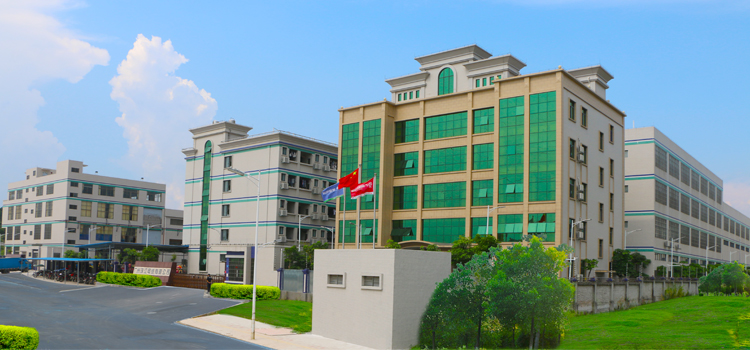 Company Profiles
Company Profiles Company Culture
Company Culture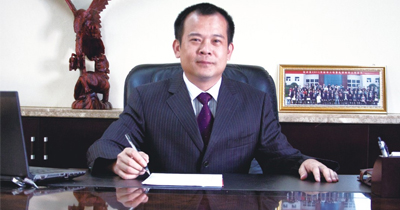 Message
Message Honor
Honor Video Center
Video Center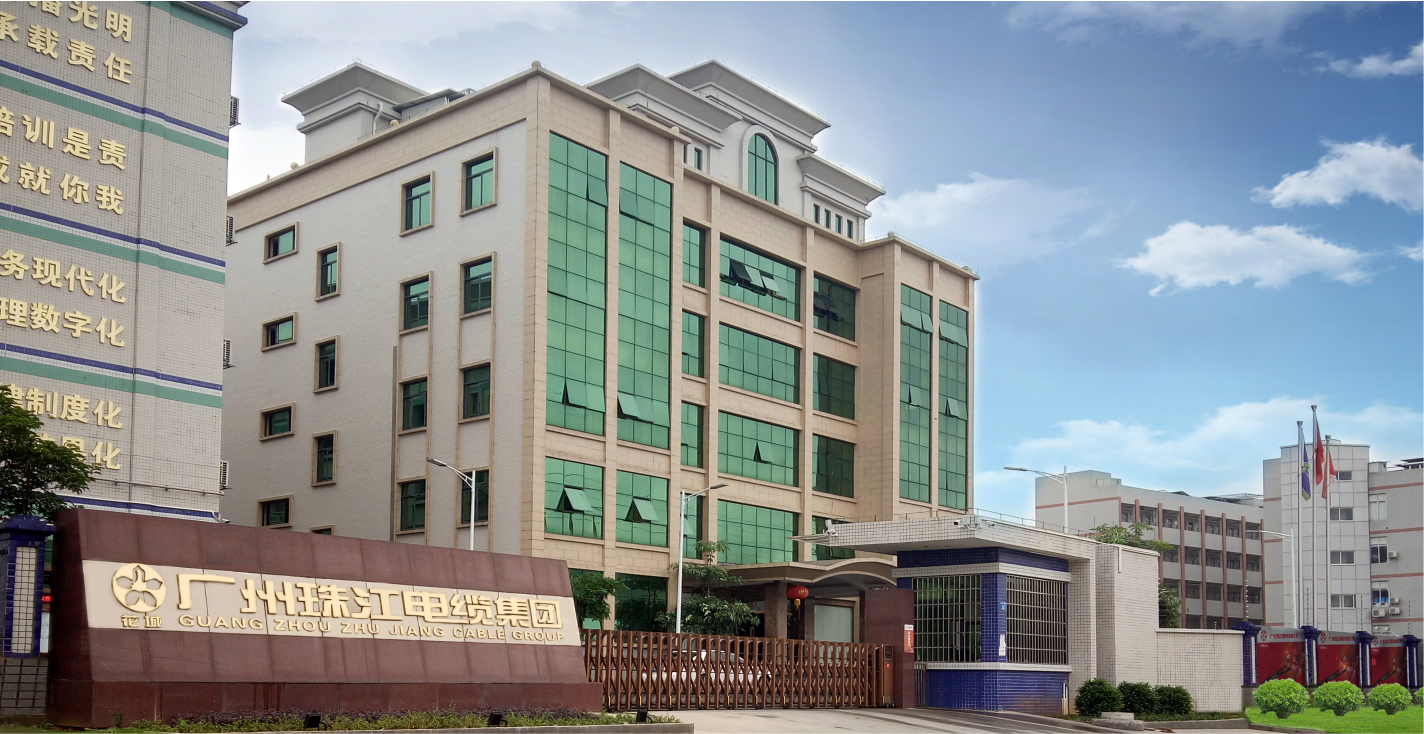 Company Reality
Company Reality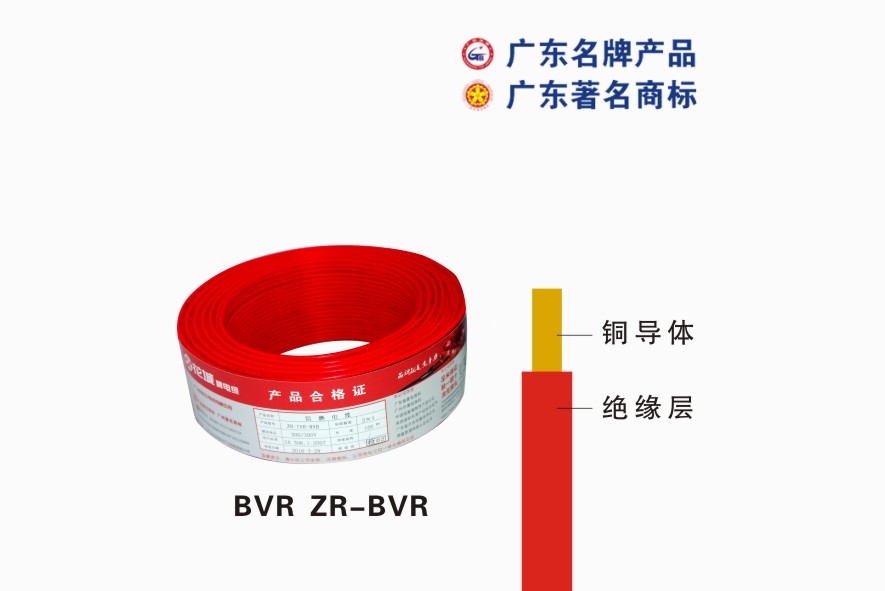 Pearl River Cable
Pearl River Cable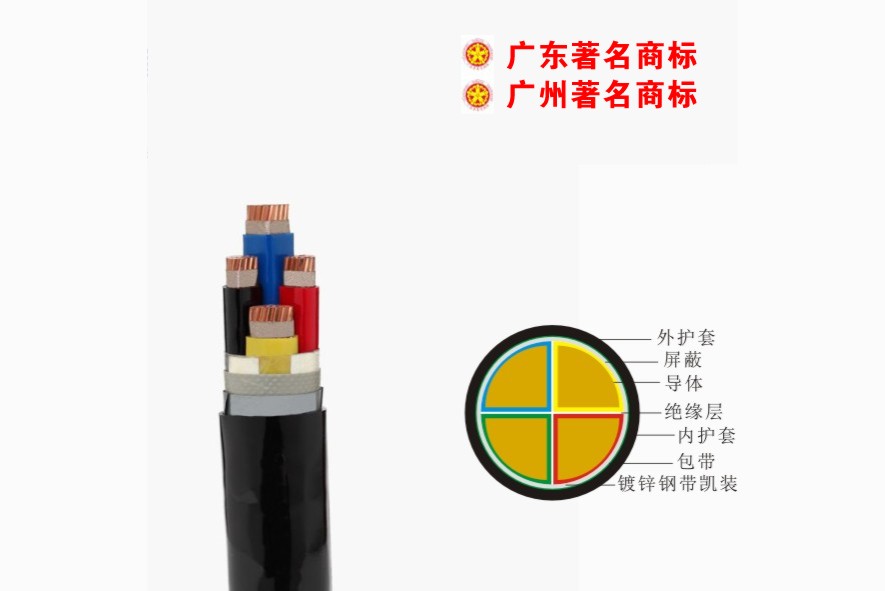 Low Voltage Cable
Low Voltage Cable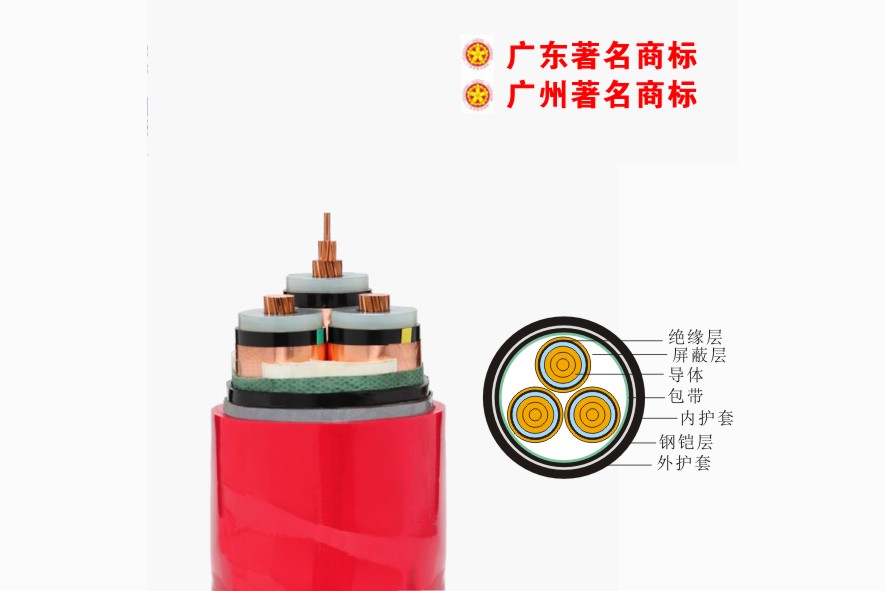 Medium Voltage
Medium Voltage Mineral Cable
Mineral Cable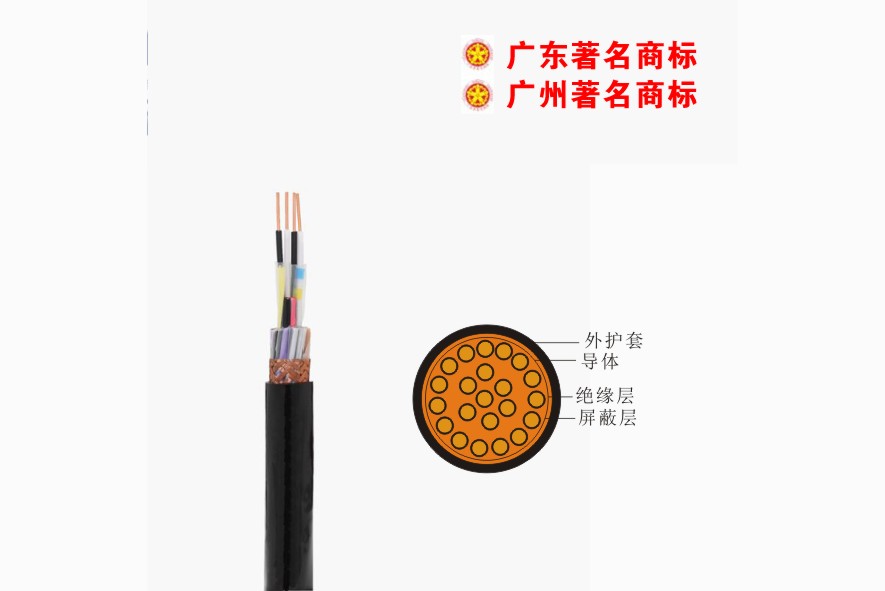 Control Signal Cable
Control Signal Cable Corporate News
Corporate News Cable Information
Cable Information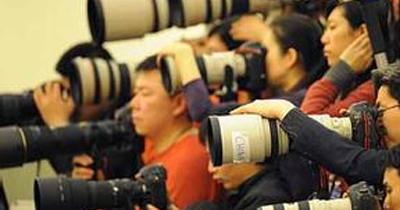 Media Reports
Media Reports Network Reprint
Network Reprint


